Imagine being able understand and converse with more than a billion people across the world… This is an opportunity you’ll have if you speak Chinese! Whether you are planning to study Chinese or you’re simply fascinated by the the world’s oldest language, here are amazing facts about the Chinese language that you should know first.
Amazing Facts About The Chinese Language:
1) Chinese is one of the most ancient languages still in use today.
Chinese is one of the oldest languages in the world. Chinese characters were first seen in 1250 BC. That’s over 3,000 years ago! They were engraved in animal bones.
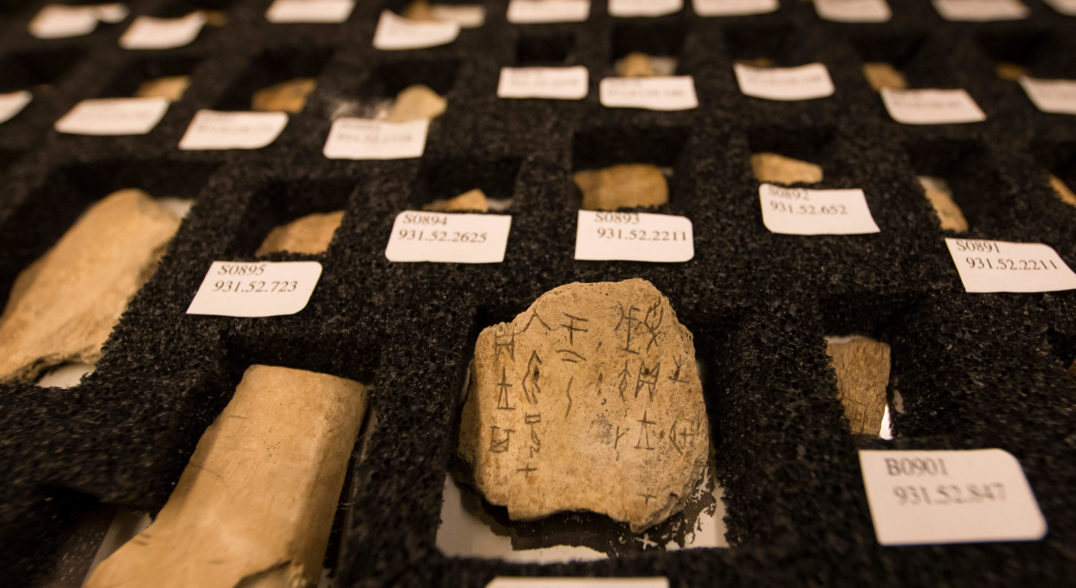
These “oracle bone” fragments, some of which show an ancient Chinese script, are housed at the Royal Ontario Museum in Toronto. Photo from Xinhua
2) Chinese is the most widely spoken language in the world.
More than 1.3 billion speak Chinese. This means one in six people speak the language and 15% of the world’s population use it as their mother tongue. Not even a combination of Spanish, English, French, and German can add up to that number. Aside from being a widely spoken language, here are more reasons to study Chinese.
3) The word “Mandarin” originates from Sanskrit.
“Mandarin” comes from the Portuguese word mandarim. Mandarim is derived from the Malay word menteri, which originates from the Sanskrit word mantrin, meaning minister.
4) Mandarin isn’t the only “Chinese language”.
Mandarin is the the most widely spoken form of Chinese language. It is also the official language of China and is used in other expatriate countries such as Hong Kong and Taiwan. However, there are other forms of Chinese such as Wu, Xiang, Cantonese, Putonghua, Min, Hakka, Gan and more that are also used in China.
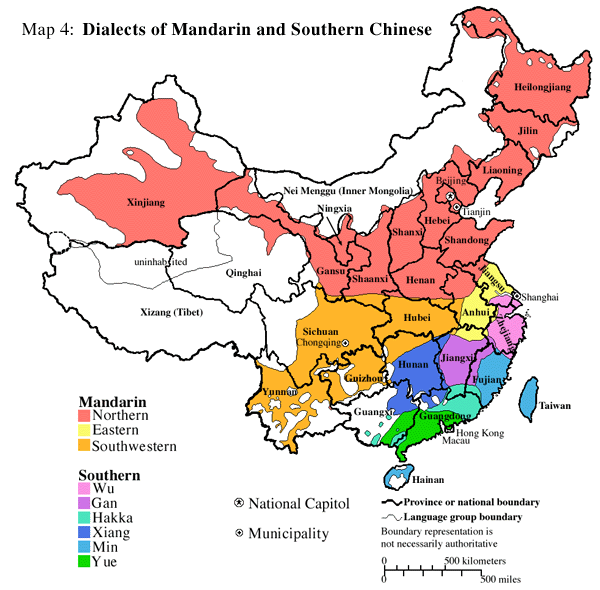
5) Chinese is a major language in numerous Southeast Asian countries.
More than 40 million Chinese people reside in other Asian countries. This means that Chinese is also used in countries such as Singapore, Indonesia, Vietnam and Malaysia.
6) It’s the only modern pictographic language.
Like the hieroglyphics in ancient Egypt, Chinese is also a pictographic language. It is the only existing pictographic language in the world today. Chinese is represented by images or drawings of subjects that they are meant to describe.

The world mountain or “shan, 山” in Chinese has three points signifying the three peaks of a mountain ridge.
7) The Chinese language doesn’t have an alphabet.
Here’s where the challenge of learning Chinese lies – it doesn’t have a segmental alphabet. You learn Chinese by studying different characters. The good thing is, Chinese can be transcribed into characters with the use of Pinyin. This takes out the burden of memorizing thousands of Chines characters!
8) There are over 50,000 distinct Chinese characters.
The Chinese language is composed of more than 50,000 characters. Some Chinese dictionaries even say that it’s much higher than 50,000. The good thing is you only need to know about 2,500 characters to read a newspaper in China.
9) You don’t need to learn all 50,000 characters!
For daily use, you don’t have to master all 50,000 characters. For regular use, you only need 20,000 Chinese characters and 2,500 to read a newspaper in China.
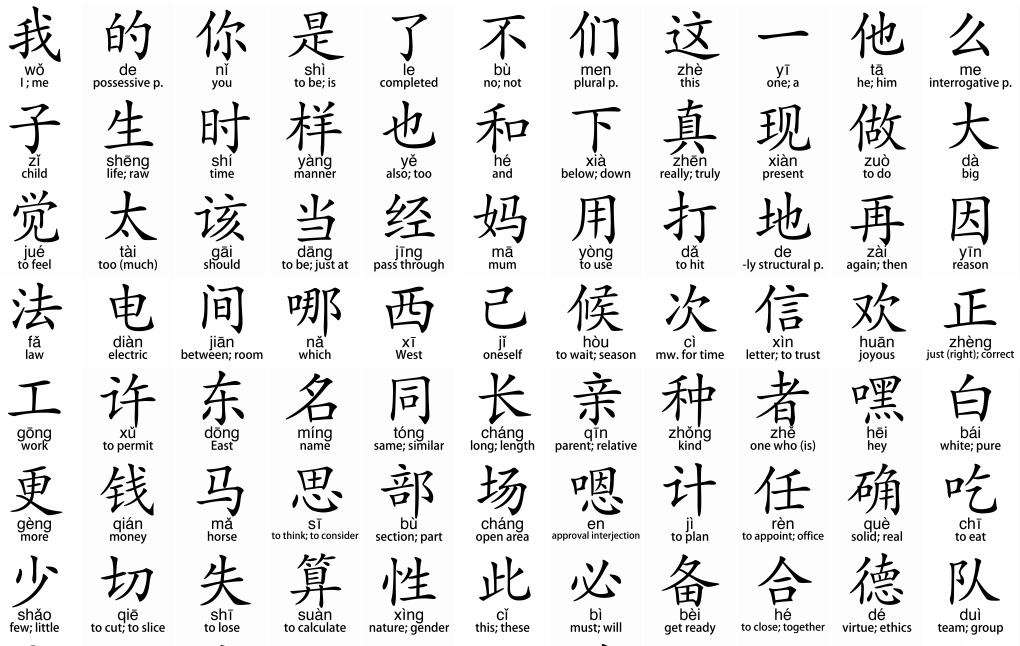
The first 100 characters every beginner Chinese learner needs to know.
10) Chinese has no articles, verb inflections, or plurals.
The Chinese language does not follow articles (“a”, “an”, and “the”), principles of grammar, or plurals. This is the reason Chinese is a language that’s easy to pick up.
11) There are two sets of Chinese characters.
Chinese characters are classified according to two groups: the first is Simplified and the second is Traditional. Simplified characters are more modern versions curated in the mid-20th century during Mao Zedong’s time. Traditional characters were used in the ancient times.
Majority of people in mainland China use the simplified version. In countries such as Hong Kong, Taiwan, and Chinese communities in other countries, traditional characters are used.
Read More: Should I Learn Simplified or Traditional Chinese?

12) New Chinese characters are being added every year.
50,000 is already a mind-blowing number, but more Chinese characters are still being added every year and for years to come! People are always coming up with new characters so the Chinese language will continue to evolve (non-stop).
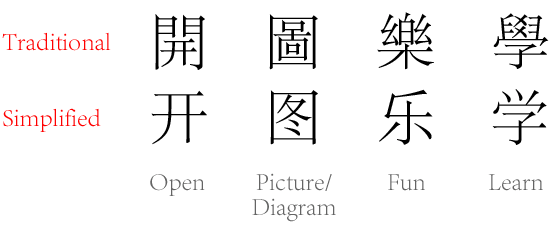
Traditional Chinese vs. Simplified Chinese. The latter has noticeably less strokes than Traditional Chinese.
13) Chinese is an official UN language.
In 1946, Chinese was included as an official United Nations language but it wasn’t used until 1973 for the UN General Assembly. The six official languages of the UN include: Chinese, English, Arabic, French, Russian, and Spanish.
14) Challenging but not hard to learn.
Contrary to popular belief, Chinese is not hard to learn. Yes, it’s challenging, but after you get a hang of the Pinyin (Chinese phonetic alphabet or spell sound), master tones and know the meaning behind Chinese characters, you can learn quickly.
Read More: How Long Does It Take To Learn Chinese?
15) Chinese is a tonal language.
The pitch of how you say a word in Chinese can totally change the word’s meaning. Chinese has four tones, each having their own pitch. To know what I mean, here’s an example!
– First tone: higher pitch
– Second tone: starts with lower pitch rising to higher pitch
– Third tone: starts with a neutral tone, dips to a lower pitch and ends with a higher pitch
– Fourth tone: starts with a slightly higher pitch and go strongly downward
Many say there is also a “fifth tone,” or “neutral” tone. It is a light sound without any particular inflection up or down.
Different dialects and languages spoken in China (such as Cantonese) have even more tones!
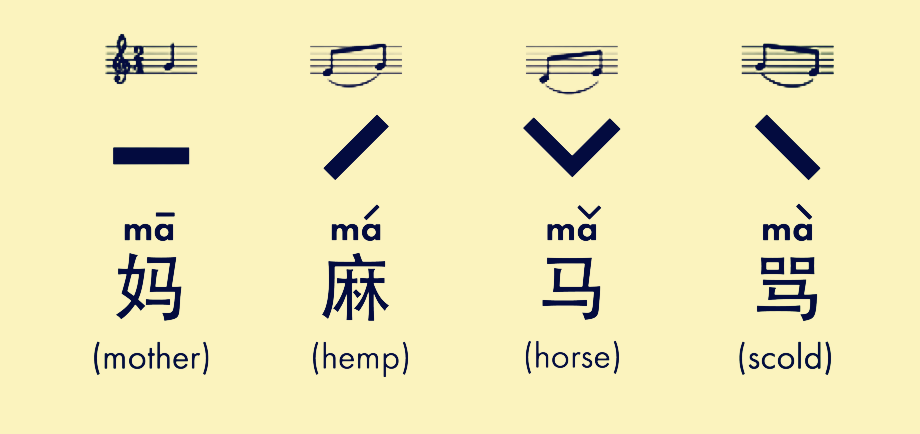
16) Chinese follows different calligraphy styles.
17) There is no gender in Chinese!
Whether writing or speaking Chinese, there are no masculine, feminine or neuter words.
18) The most complicated Chinese character is biang.
Out of more than 50,000 characters in the Chinese language, “biang” is the most difficult. It’s an unofficial Chinese character with 57 strokes and has to be written twice! Biang copies the sound of noodles smacking against the chef’s table with the popular Shaanxi region biangbiang noodle dish (biángbiáng miàn).
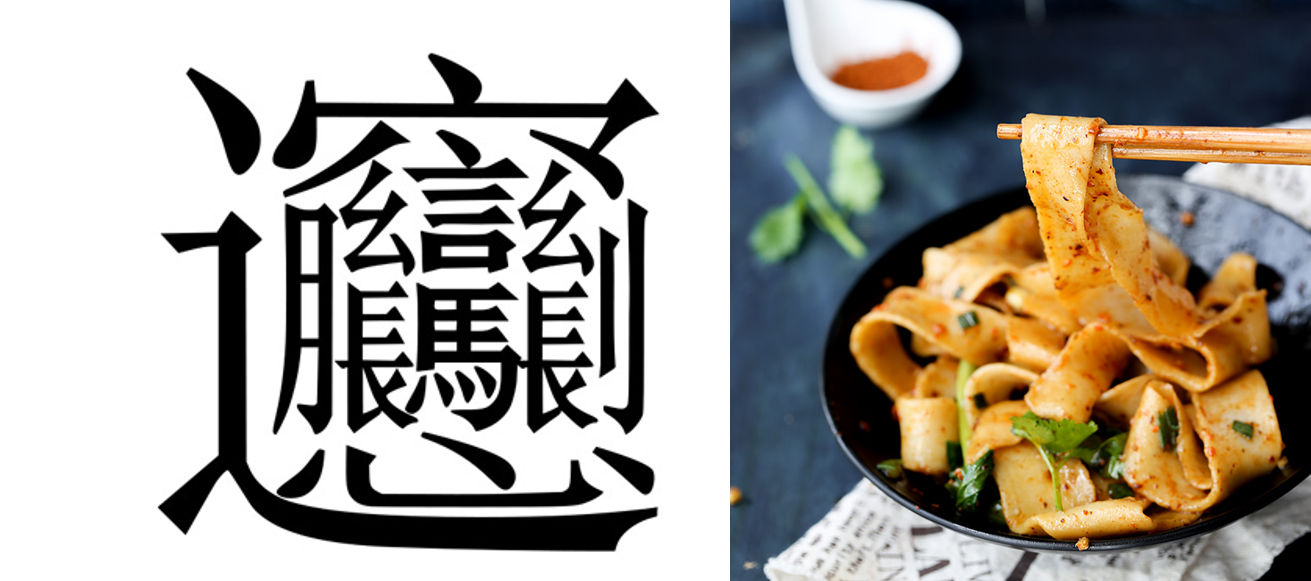
19) Chinese characters aren’t exclusive to the Chinese.
Japan, Korea and Vietnam adopted their writing system from Chinese characters.
20) Chinese has borrowed words from English.
With exposure to Western culture, Chinese has adopted some English words. For instance, kafei (咖啡 /kaa-fay/) basically means coffee or shafa (沙发 /shaa-faa/) means sofa in English.
21) The world’s most famous people are learning Chinese as a second language!
Chinese is the new English! The language has become the most popular foreign language in the West today. Mark Zuckerberg, Malia Obama, former president of South Korea Park Geun-hye, former Australian Prime minister Kevin Rudd and professional wrestler John Cena, have all studied Chinese.
If you would like to learn Chinese like these celebs, there are so many budget-friendly Chinese language classes here.

John Cena speaks fluent China at WWE’s historic press conference in China in 2016.
22) Ancient Chinese texts were written from top right to bottom left.
During the ancient times, Chinese texts were written vertically from top to bottom, right to left. Chinese people did not write with pens during those times. Instead, they used brush writing so writing from top to bottom, right to left would have been more convenient. It also prevented smudging.
Writing vertically was also adopted as a direct result of the writing material in ancient China. People used the “Jian” or rolled-up bamboo slips/slats for early writing.
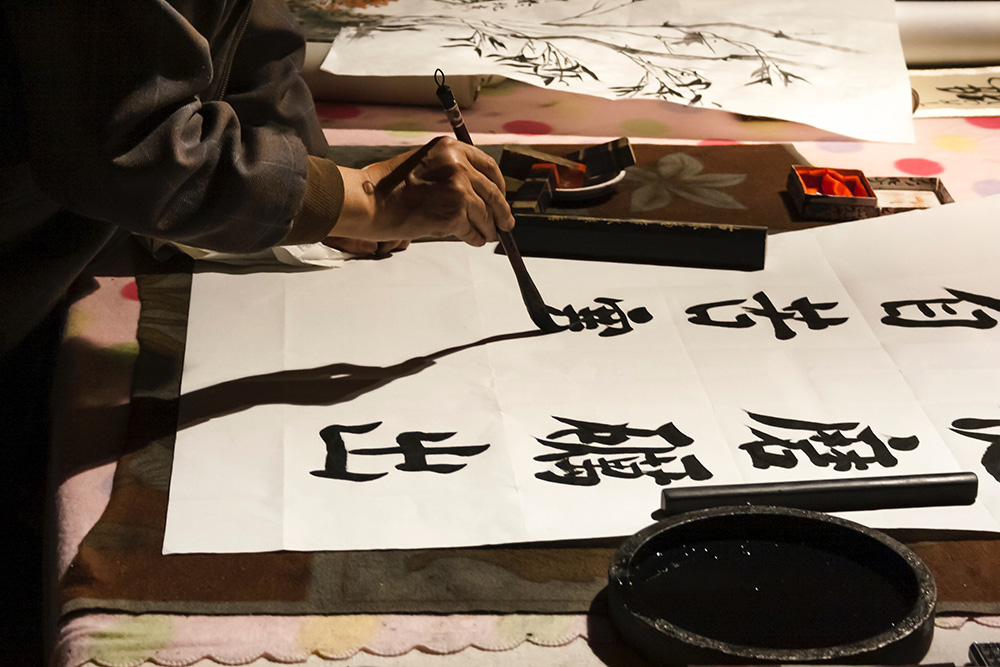
Brush writing is done with one’s hand suspended above the writing surface.
23) The Chinese language has number symbols.
The Chinese number system is one of the most logical systems in the world. Every number in Chinese has a specific signal that can be described using only one hand.
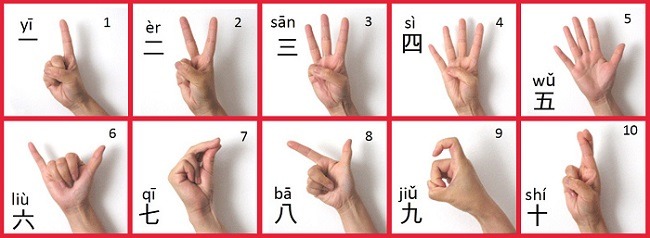
24) Learning Chinese makes you smart!
As you grow older, your brain particularly dreads understanding complex subjects. Learning Chinese is one of the best forms of mental exercise. It sharpens your brain by activating your left and right hemispheres to differentiate words from each other. Research suggests that people who speak and write Chinese have heightened cognitive abilities.
Want To Speak Chinese In As Fast As 90 Days?
As I said, learning Chinese doesn’t have to be difficult. There are so many Online Chinese Language Programs that will show you faster and smarter ways to learn Chinese.
If you’re excited to speak Chinese in as little as 90 days, check out programs here!
More Interesting Things About China!
Did you enjoy these facts about the Chinese language? Check out even more…
- 19 Unique Facts About Chinese History You Won’t Learn in Class from ancient controversies to modern myths!
- A Day in the Life of a Business Student in China at one of China’s top schools!
- Where do Chinese characters come from? Richard Sears, a world expert on Chinese characters from USA
, explains
- Snack Across China: Delicacies from the Middle Kingdom
- Shantou University Medical College (SUMC) MBBS Application Guide 2025 - April 24, 2025
- Top 10 Ranked Chinese Universities - January 10, 2025
- China Scholarships – The 2025 Guide for International Students - December 30, 2024








